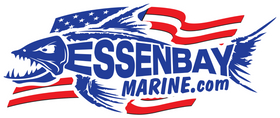Intro
When boating season winds down, proper winterization protects your engine, systems, and hull—and saves you from expensive spring repairs. The core steps are similar everywhere, but boats that live in saltwater need extra attention to corrosion compared with freshwater boats. Use this guide to winterize confidently and choose the right products.
Why Winterizing Matters
-
Prevents freeze damage to engines and plumbing
-
Reduces corrosion (especially in saltwater)
-
Protects fuel systems from ethanol issues and phase separation
-
Extends the life of your boat and gear
Winterizing a Saltwater Boat
-
Run fresh water through the engine and raw-water circuits to remove salt.
-
Rinse hull, bilge, trailer, and hardware. Use a salt neutralizer on metal and hard-to-reach areas.
-
Fuel system care
-
Fill the tank to ~90–95% to minimize condensation.
-
Add a marine fuel stabilizer; run the engine 10–15 minutes so treated fuel reaches injectors/carb.
-
Engine protection
-
Change engine oil and filter (warm engine first).
-
Replace gear lube in the lower unit/outdrive.
-
Fog the engine (per manufacturer instructions) to protect cylinders and internals.
-
Circulate non-toxic RV/marine antifreeze through raw-water side if the boat will see freezing temps.
-
Electrical & corrosion prevention
-
Spray anti-corrosion protectant on electrical connectors, exposed fasteners, steering and throttle linkages.
-
Grease fittings and moving parts.
-
Interior, bilge, and storage
-
Clean and dry bilge; add moisture absorbers.
-
Remove textiles and electronics.
-
Cover or shrink-wrap with ventilation.
Winterizing a Freshwater Boat
-
Cooling and freeze protection
-
Drain water from block, manifolds, raw-water pumps, strainers.
-
Pump non-toxic RV/marine antifreeze through the raw-water side until it exits each discharge.
-
Fuel and engine service
-
Same as saltwater: stabilize fuel, run treated fuel, change oil and filter, replace gear lube, fog if recommended.
-
Plumbing systems (if equipped)
-
Drain freshwater tanks/lines, water heater, heads, washdowns.
-
Pump antifreeze through all fixtures until pink appears at each outlet.
-
Batteries and storage
-
Disconnect and clean terminals; store on a maintainer.
Key Differences: Saltwater vs. Freshwater
-
Corrosion risk: High in saltwater—use neutralizers and anti-corrosion sprays; freshwater focuses more on freeze protection.
-
Flushing: Saltwater requires thorough flush/neutralize; freshwater flush is simpler.
-
Exterior care: Saltwater boats benefit from waxing and protective coatings more frequently.
-
Storage environment: Coastal humidity and salt air demand extra ventilation and corrosion control.
Recommended Products (commonly used)
-
Marine/RV Antifreeze (non-toxic, pink; choose -50°F to -100°F depending on climate)
-
Fuel Stabilizer (marine formulas from Sta-Bil, Star Tron, Sea Foam, etc.)
-
Fogging Oil (Quicksilver, Yamaha, CRC)
-
Engine Oil & Oil Filters (per manufacturer spec)
-
Gear Lube / Lower-Unit Lube (per brand spec)
-
Corrosion Inhibitor / Protectant (CRC Marine, WD-40 Specialist Marine, Boeshield T-9)
-
Salt Neutralizer (Salt-Away, Star brite Salt Off) for saltwater boats
-
Bilge Cleaner & Moisture Control (bilge cleaner, DampRid/mildew control bags)
-
Tools & supplies: oil extractor, funnels/hose adapters, fuel/water separator filters, battery maintainer, fitted cover or shrink wrap
Quick Pro Tips (works for all boats)
-
Always follow your engine/drive manufacturer’s manual.
-
Warm the engine before changing oil so contaminants drain out.
-
Use an oil-changing system (manual extractor or plumbed pump) to make end-of-season oil & filter changes fast and clean; do it at layup and note oil type/quantity for spring.
-
Replace the fuel/water separator annually (or at winterization).
-
Label hoses and take photos—spring recommissioning is faster.
-
Create and save a checklist; repeat it every year.
FAQ
Q: Do I really need to fog a fuel-injected engine?
A: Many manufacturers still recommend fogging (or a protective procedure) before storage; check your manual for the correct method.
Q: How much antifreeze do I need?
A: It varies by engine and onboard systems. A small outboard may need a couple of gallons; inboards/IOs plus plumbing can require 3–6+ gallons. When in doubt, buy extra—unused jugs keep.
Q: Should I leave the tank full or empty?
A: In most cases, a nearly full tank (90–95%) plus stabilizer reduces condensation. Always run stabilized fuel through the system before shutdown.
Get Your Winterizing Products Today
Whether your boat lives on saltwater bays or freshwater lakes, winterizing is non-negotiable. Tackle corrosion for saltwater craft, focus on freeze protection for freshwater, and you’ll enjoy a stress-free spring launch.
Shop our curated winterization essentials—antifreeze, fuel stabilizer, fogging oil, corrosion inhibitors, and more—at Essenbay Marine.

